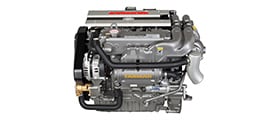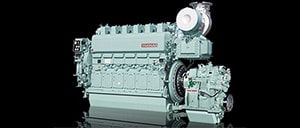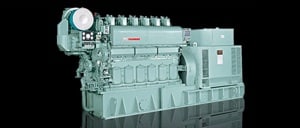News Release
Yanmar Showcases its Comprehensive Diesel and Gas Engine Line-up at BAUMA 2019
January 28, 2019
Yanmar Co., Ltd.
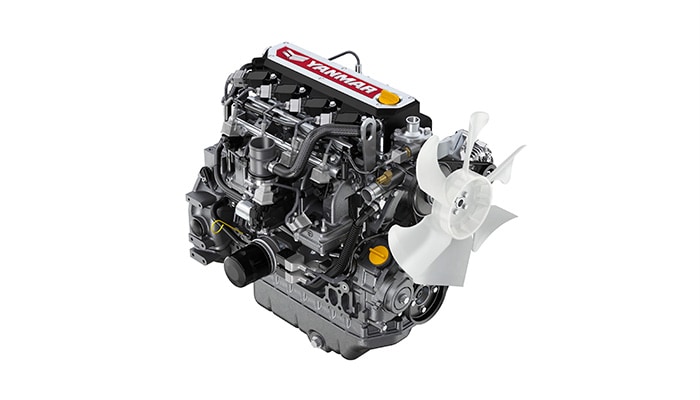
Munich, Germany (January 28, 2019) - Yanmar will exhibit its all-new gas-powered and diesel-powered industrial engines at the world’s largest exhibition for construction equipment, BAUMA 2019. Over April 8th to 14th, Yanmar will for the first time show its 4TN88G and 4TN98G gas-powered engines. Furthermore, Yanmar will be showing its latest entries into the high-power diesel range, up to 155 kW, with the 4TN101 and 4TN107. Rounding out the show will be L series of industrial diesel engines - a workhorse that meets the needs of a diverse range of customers.
"Each model showcased at BAUMA 2019 is our promise to meet the distinct needs of our different customers," said Carlo Giudici, Sales Director, YANMAR Europe industrial power train. "We continue to maximize the life cycle value of customers by expanding our product line-up, enhancing existing products, and maintaining a high quality of services."
New Models at BAUMA 2019
Industrial Gas Engine: 4TN88G, 4TN98G
The two newly developed models which run on LPG (liquid petroleum gas) and are compliant with U.S. EPA※1 Tier2, CARB※2 Tier4 and EU StageⅤ emissions regulations, are being shown here at BAUMA 2019 for the first time. Maximum output: 4TN88G: 45.0kW※3/4TN98G: 63.0kW※3) The addition of these clean burning, low noise engines allows Yanmar to strengthen its product portfolio. Furthermore, Yanmar has plans to introduce bi-fuel※4 specification models that can run on both LPG and gasoline. Gas engines produce very little PM※5 (particulate matter), and are comparatively quieter than diesels. This makes them ideal for work indoors and in enclosed areas, where environmental concerns are a major consideration. Yanmar has more than 30 years of experience working with gas engines. This long-earned experience together with our deep knowledge of industrial diesel engine technology has allowed us to develop a proprietary gas combustion system for high output, fuel efficient and compact engines that display the durability and reliability required of industrial applications. Yanmar can now provide customers with a “One-Stop Solution”, whereby Yanmar can offer either a diesel or gas power source in one-sales contact, with maximum compatibility to the customer’s equipment.
| Model | Displacement | Output | Emissions compliance |
|---|---|---|---|
| 4TN88G | 2.2L | 45.0kW※3 | U.S. EPA Tier2, CARB Tier4 EU StageⅤ |
| 4TN98G | 3.3L | 63.0kW※3 |
Industrial diesels with a maximum output of 155kW: 4TN101、4TN107
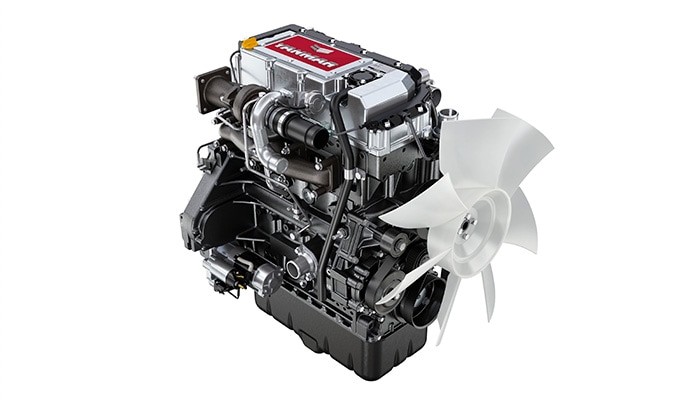
The two new high-output, industrial diesels that made their world debut at Intermat in Paris in April, 2018: the 4TN101 (maximum output: 105kW) and the 4TN107 (90-155kW) with two-stage turbocharger, will be shown once again at BAUMA. This time, the 4TN107 with single-stage turbocharger will, for the first time, feature its DOC※6+DPF※7+SCR※8 emissions after-treatment system. The after-treatment system utilizes Yanmar’s proprietary DPF regeneration technology already successfully fitted to the common rail TNV series and renowned for its reliability. Yanmar has also developed a mixer-less SCR solution which results in lower back pressure than the mixer configuration and consequently allows more freedom in the designing of the exhaust tail pipe on the vehicle. The standard after-treatment units are a compact design to match the width of the engine which allows Yanmar to offer a range of optimum layout options for different construction equipment, agricultural equipment and materials handling applications. The configuration of the device simplifies customers’ design requirements for the engine’s installation to equipment, while improving external accessibility, and the fact that no special service tools are required results in reduced maintenance time and increased uptime for customers.

| Model | Displacement | Output | Emissions compliance |
|---|---|---|---|
| 4TN101FHT | 3.8L | 55-105kW | U.S. EPA Tier4 Final EU StageⅤ |
| 4TN107FHT | 4.6L | 90-110kW | |
| 4TN107FTT | 4.6L | 127-155kW |
European StageⅤ Emissions Regulations Compliant L-V Series Of Air-Cooled Industrial Diesel Engines
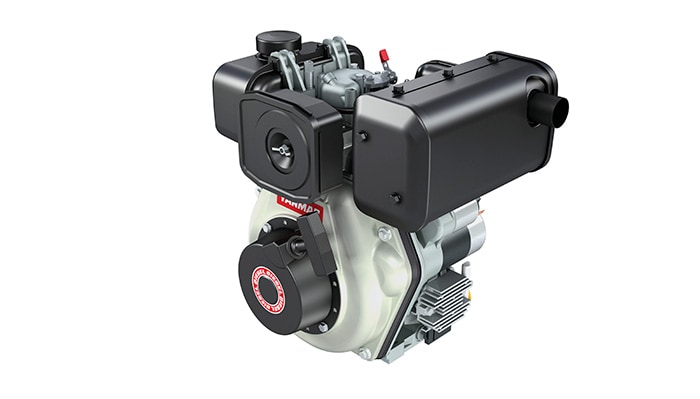
From the first sales of the L Series in 1983, the world’s smallest and lightest air-cooled industrial diesel engine has been praised for its outstanding performance in compact construction equipment, agricultural equipment and for power generation. Now, the L48V (maximum output: 3.4 kW) has been redeveloped to achieve European StageV emissions certification. To meet the new strict regulation limits for below 19kW range in a bore of only 70mm, the L48V utilizes a proprietary fuel injection technology based on Yanmar’s direct injection system, together with a diesel oxidation catalyst (DOC), while maintaining the reliability and fuel efficiency the engine is well known for. Not only the new L48V, but also the L70V (maximum output: 4.8kW) and L100V (maximum output 6.8kW) are certified to EU StageV by the adaption of an exhaust gas recirculation (EGR)※9 system from the current L-N series. The L-V series will be presented at BAUMA.
| Model | Displacement | Output | Emissions compliance |
|---|---|---|---|
| L48V | 0.219L | 3.4kW | EU StageⅤ |
| L70V | 0.320L | 4.8kW | |
| L100V | 0.435L | 6.8kW |
EU StageV compliant TNM/TNV Series
In addition to the new models featured, we will also be showing a range of the EU StageV compliant TNM/TNV Series. With 6 years’ experience in DPF mounted TNV common rail engines in the over 19kW class and over 400,000 units in the market, Yanmar’s proprietary DPF regeneration technology prevents clogging of the DPF and has been widely recognized worldwide as the most reliable after treatment system in its category. EU StageV emissions regulations come into effect from 2019 at the range of below 56kW and 2020 at the range of 56kW to 130kW. Yanmar engines that need the addition of a DPF to meet these standards, will employ Yanmar’s highly reliable DPF system.
EU StageV certified TNM, TNV Series (Variable speed specification)
| Output range | Engine type |
|---|---|
| Under 19kW | 3TNM68 、3TNM72 、3TNM74F |
| 2TNV70 、3TNV70 、3TNV74F 、3TNV76 | |
| 3TNV80F 、3TNV80FT 、3TNV82A | |
| 3TNV88 、3TNV88F | |
| 19kW to 56kW | 3TNV88C 、3TNV86CT 、3TNV86CHT |
| 4TNV88C 、4TNV86CT 、4TNV86CHT | |
| 4TNV98C 、4TNV98CT | |
| Over 56kW | 4TNV94FHT |
With the new engine lineup and the TNM/TNV series, Yanmar is well placed to meet the needs of our customers with a versatile range of power solutions.
- ※1EPA: Environmental Protection Agency in United States
- ※2CARB: California Air Resources Board
- ※3Maximum outputs are the gross values based on SAE1995.
- ※4Bi-fuel engine: Engines that can run on both of LPG and gasoline fuel by implementing each fuel injection system on an engine
- ※5PM : Particulate matter are hazardous particles suspended in the air.
- ※6DOC (Diesel Oxidation Catalyst): A catalyst to convert CO and hydrocarbons from diesel exhaust into CO2 and water.
- ※7DPF (Diesel Particulate Filter): A filter device designed to remove particulate matter (PM) from diesel exhaust
- ※8SCR: The Urea SCR (Selective Catalytic Reduction) system utilizes ammonia generated from urea water, to deoxidize, cleanse, and detoxify NOx contained in the exhaust gas.
- ※9EGR (Exhaust Gas Recirculation): The system recirculating a portion of an engine’s exhaust gas back to the engine cylinders to reduce NOx in the exhaust gas.
About Yanmar
With beginnings in Osaka, Japan, in 1912, Yanmar was the first to succeed in making a compact diesel engine of a practical size in 1933. Then, with industrial diesel engines as the cornerstone of its enterprise, Yanmar has continued to expand its product range, services, and expertise to deliver total solutions as an industrial equipment manufacturer. As a provider of small and large engines, agricultural machinery and facilities, construction equipment, energy systems, marine equipment, machine tools, and components, Yanmar’s global business operations span seven domains.
Press Release Download
【Inquiries】
Public Relations Group
Brand Communication Division, Yanmar
E-mail: koho@yanmar.com
- Note: Information contained in the news release is valid at the time of publication and may differ from the most recently available information.





